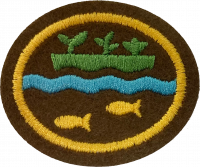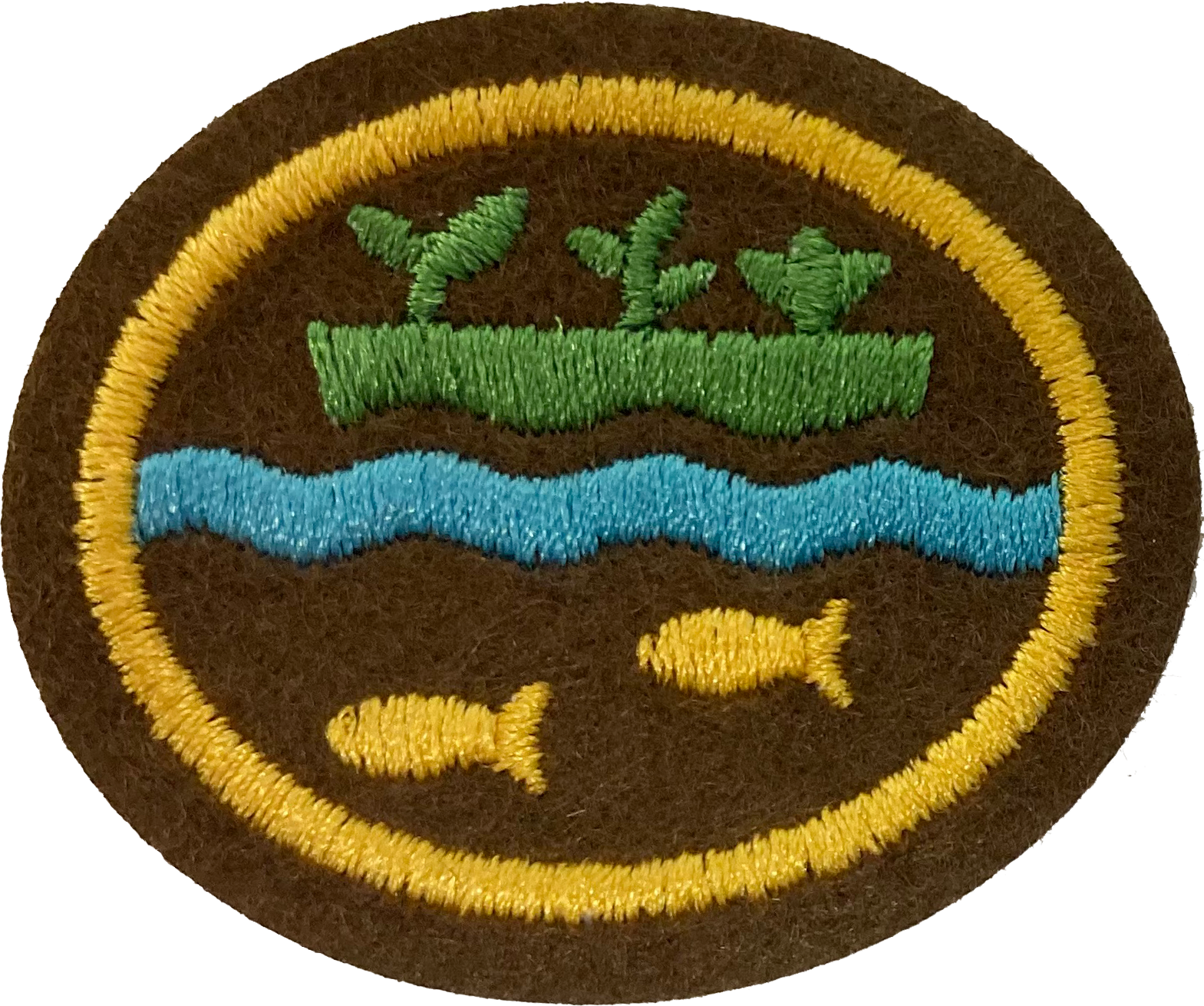|
|
| Line 97: |
Line 97: |
| | <!-- 8. ¿Qué tipos de enfermedades afectan los sistemas hidropónicos? ¿Los sistemas acuapónicos? ¿Por qué un cultivador debe evitar el uso de pesticidas, fungicidas y fertilizantes en un sistema acuapónico? --> | | <!-- 8. ¿Qué tipos de enfermedades afectan los sistemas hidropónicos? ¿Los sistemas acuapónicos? ¿Por qué un cultivador debe evitar el uso de pesticidas, fungicidas y fertilizantes en un sistema acuapónico? --> |
| | | | |
| − | <div lang="en" dir="ltr" class="mw-content-ltr">
| + | {{clear}} |
| − | Hydroponics:
| |
| − | In many commercial growing settings, the plants do not have strong immune systems since they have not been exposed to the outdoor life which would harden them against diseases. This is in contrast to aquaponics which has a bit more exposure due to the fish and the bacteria associated with them. Many commercial hydroponic systems require a near sterile environment because of this. Diseases include powdery mildew, root rot, rust, botrytis, among many others.
| |
| − | </div>
| |
| | | | |
| − | <div lang="en" dir="ltr" class="mw-content-ltr">
| + | {{clear}} |
| − | Aquaponics: Some of the most common diseases for the plants include powdery mildew, lettuce mosaic virus, tomato spotted wilt virus, and deficiencies such as iron and magnesium.
| |
| − | </div>
| |
| | | | |
| − | <div lang="en" dir="ltr" class="mw-content-ltr">
| + | {{clear}} |
| − | <gallery>
| |
| − | Powdery_mildew_.jpg|Powdery Mildew
| |
| − | Root_Rot_.jpg |Root Rot
| |
| − | Wheat_leaf_rust_.jpg|Rust
| |
| − | Aardbei Lambada vruchtrot Botrytis cinerea.jpg|Botrytis
| |
| − | Lettuce_mosaic_virus_.jpg|Lettuce Mosaic Virus
| |
| − | Tomato_spotted_wilt_virus_.jpg |Tomato Spotted Wilt Virus
| |
| − | Iron_deficiency_in_plants_.jpg|Iron Deficiency
| |
| − | Magnesium_deficiency_in_plants_.jpg|Magnesium Deficiency
| |
| − | </gallery>
| |
| − | </div>
| |
| | | | |
| − | <div lang="en" dir="ltr" class="mw-content-ltr">
| + | {{clear}} |
| − | Powdery Mildew: Develops when standing water is allowed prolonged contact with the plant in areas other than its roots. Prevention involves avoiding allowing this water from pooling on or around the stems and leaves of the plants. Fungicides and other treatments are available that will help to curb this problem. Also, sprays that are high in potassium are highly suggested in the growing world for this.
| |
| − | </div>
| |
| | | | |
| − | <div lang="en" dir="ltr" class="mw-content-ltr">
| + | {{clear}} |
| − | Root Rot: Caused by bacteria around the roots that eat at them until the plant dies. If caught soon enough, remove the infected area and spray with fungicide.
| |
| − | </div>
| |
| | | | |
| | | | |
| − | <div lang="en" dir="ltr" class="mw-content-ltr">
| + | {{clear}} |
| − | Rust: Not rust as in oxidized iron. High humidity is the cause of this. Most often found under the leaves as red powdery spots. To prevent from spreading, spot treat with rust- prevention chemicals.
| |
| − | </div>
| |
| | | | |
| − | <div lang="en" dir="ltr" class="mw-content-ltr">
| + | {{clear}} |
| − | Botrytis: Fuzzy white areas on leaves. Caused by poor ventilation. Take off affected plant parts and create better air flow.
| |
| − | </div>
| |
| | | | |
| − | <div lang="en" dir="ltr" class="mw-content-ltr">
| + | {{clear}} |
| − | Lettuce Mosaic Virus: This is a genetic virus that has no cure. Although it is not a hazard to people, it can easily destroy an aquaponics system, and can be transferred between plants by insects. Prevention is the trick. Pull plants that look like they are ill and quarantine them. If they recover, great! If not, they might have had a system-hazardous illness.
| |
| − | </div>
| |
| | | | |
| − | <div lang="en" dir="ltr" class="mw-content-ltr">
| + | {{clear}} |
| − | Tomato Spotted Wilt Virus: It looks just like the name suggests. There is not a treatment for it, so removing a plant that looks odd is key before it can spread. The produce will ripen oddly and the skin of the plant's fruit will develop odd welts. Not a good sign.
| |
| − | Deficiencies: In an aquaponics system, this may be caused because the fish may compete with the plants for a certain nutrient. Also, pH can cause damages as well. Taking water tests for serious growers and keeping the water moving and clean for less experienced growers will help to solve this problem.
| |
| − | </div>
| |
| | | | |
| − | <div lang="en" dir="ltr" class="mw-content-ltr">
| + | {{clear}} |
| − | Fish Diseases: Then there are fish diseases. Anything that affects the fish has the possibility to affect the plants. This may or may not be a transfer of diseases, but if the water gets toxic for the fish, it is probable that it is not be good for the plants either.
| |
| − | Insect Infestation: These can be a major cause of concern as the plants are inside, unexposed to a number of animals that would keep the plants free of the pests. In a hydroponics system, manually removing the insects or using insecticides are recommended. Since insecticides cannot be used in aquaponics, manually removing the insects is good, but removing the plant and letting it soak completely in the fish's water for a while will cause the insects to let go. A great source of food for the fish!
| |
| − | </div>
| |
| | | | |
| − | <div lang="en" dir="ltr" class="mw-content-ltr">
| + | {{clear}} |
| − | Treatment: One of the best treatments is prevention. More specific prevention from spreading. If a leaf looks odd, take it off. If a plant looks sickly, replace it. There may be reasons that the plant is not doing well, especially if the other plants are thriving. If all the plants are sickly, that is a sign that either the entire system is infected, or there is a deficiency. Of course, this is assuming that water and light, humidity, and the other basic elements of plant survival are adequate.
| |
| − | </div>
| |
| | | | |
| − | <div lang="en" dir="ltr" class="mw-content-ltr">
| + | {{clear}} |
| − | The simple answer to why you should never use chemicals in an aquaponics system is because using chemicals will affect the fish poorly.
| |
| − | </div>
| |
| | | | |
| | <noinclude></noinclude> | | <noinclude></noinclude> |
| Line 167: |
Line 131: |
| | | | |
| | | | |
| − | <div lang="en" dir="ltr" class="mw-content-ltr">
| + | {{clear}} |
| − | This completely depends on the type of system being built, as well as how intricate you plan to make it. Refer back to question 5 for more specifics. Here's a list of components you might need to set up your system:
| |
| − | </div>
| |
| | | | |
| − | <div lang="en" dir="ltr" class="mw-content-ltr">
| + | {{clear}} |
| − | Hydroponics:
| |
| − | a). A container for water
| |
| − | b). A tray for plants, possibly one that can be set over the water reservoir
| |
| − | c). A pump and tubing, depending on the system
| |
| − | d). PVC pipe and connectors or other material if stacking the plant trays
| |
| − | e). Electricity for plugging in equipment
| |
| − | f). Air pump and air stone, depending on the system
| |
| − | g). Plants
| |
| − | h). A fertilizer of some sort
| |
| − | i). Sun light and/or a grow light
| |
| − | j). For more advanced systems or systems with extremes in temperature, a thermostat
| |
| − | </div>
| |
| | | | |
| − | <div lang="en" dir="ltr" class="mw-content-ltr">
| + | {{clear}} |
| − | Aquaponics:
| |
| − | a). A container for water and fish
| |
| − | b). A tray for plants, possibly one that can be set over the water reservoir
| |
| − | c). A pump and tubing that won't get clogged easily, depending on the system
| |
| − | d). PVC pipe and connectors or other material if stacking the plant trays
| |
| − | e). Electricity for plugging in equipment
| |
| − | f). Air pump and air stone, depending on the system
| |
| − | g). Plants
| |
| − | h). Fish
| |
| − | i). Fish food
| |
| − | j). Sun light and/or a grow light
| |
| − | k). For more advanced systems or systems with extremes in temperature, a thermostat
| |
| − | l). Thermometer for the fish's water to monitor water temperature
| |
| − | </div>
| |
| | | | |
| | <noinclude></noinclude> | | <noinclude></noinclude> |


